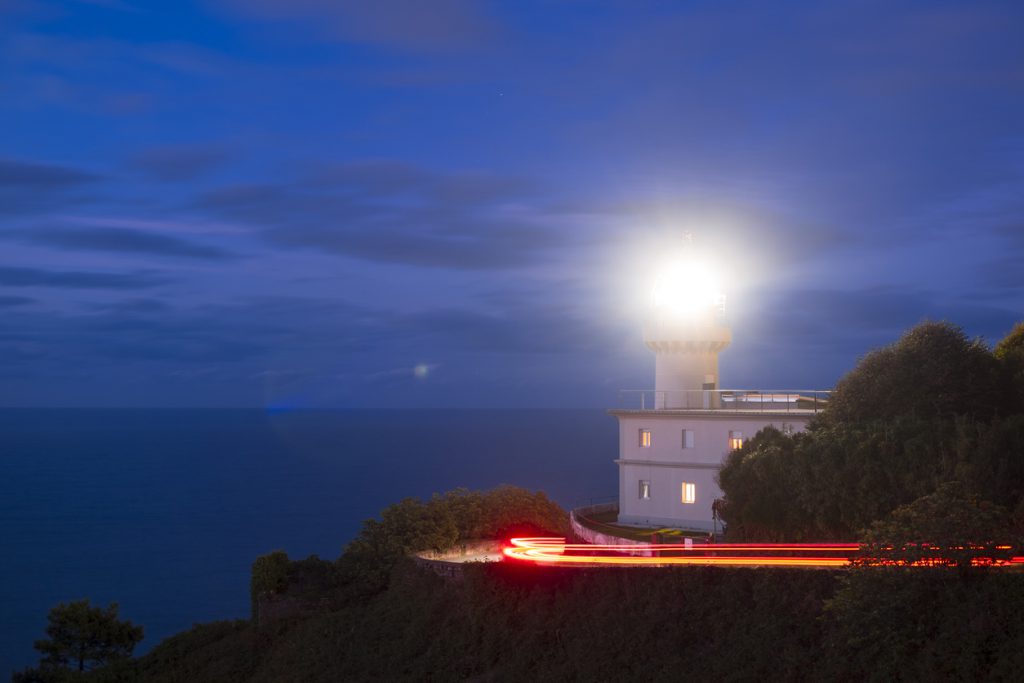Northern Spain is full of delightful places to visit. Towns, national parks, bio-reserves…they’re all ideal stopping points, regardless of whether you’re travelling on two or four wheels on your road trip through the north.
It doesn’t matter if you’re a new driver or you’ve got 30 years’ experience. Taking the driver’s seat on a trip around places you don’t know, villages you’ve never been to, and monuments you’ve never seen – particularly in the north of Spain – is definitely worth the effort.
Luckily, it doesn’t involve long distances or crazy sections of road. It’s a gentle, comfortable car trip. We’re not recommending thousands of kilometres or obscure places – this is an orderly journey to make the most of the north. It’s ideal for autumn travel.
Spain is a country of contrasts and a nation where you can discover a whole new world for every kilometre you travel. If there’s an area that’s particularly perfect in autumn, however, it’s the north.
Galician green
Galicia is the ultimate expression of northern Spain’s natural, luxuriant foliage. We suggest a coastal route that begins in the town of A Guarda in the province of Pontevedra. Here, attractions include Monte de Santa Tecla, from where you can view a genuine Galician fort and the distinctive Monumento Histórico Artístico monument you’ll find there.
If you manage to climb a bit higher here, you’ll be able to enjoy some spectacular views of the mouth of the Miño River, as well as the ever-present Atlantic Sea and both Galician and Portuguese mountains.
From here, it’s a pleasant drive to the mouth of the Vigo Ria, where, if you buy your tickets in advance (there’s a limit on visitor numbers), you’ll be able to visit the Cíes Islands.
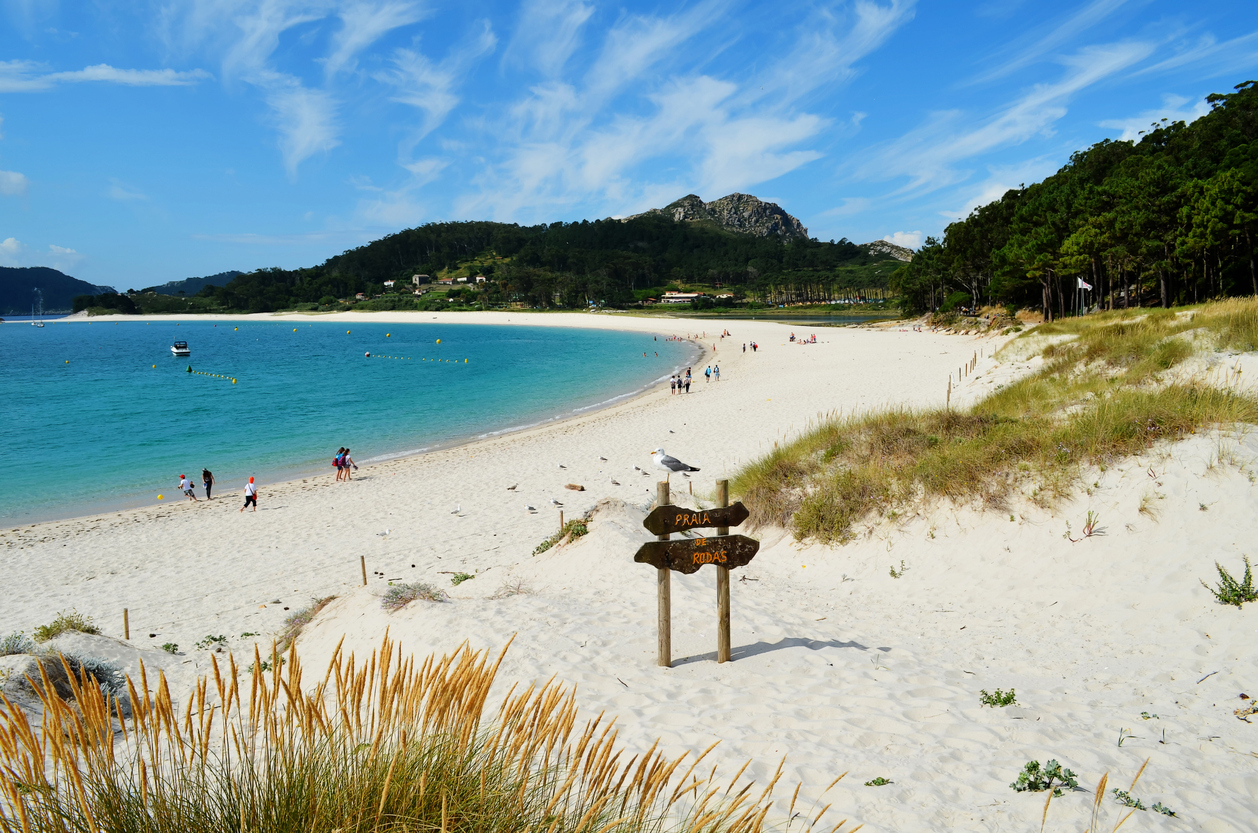
Another essential stop-off is Rodas Beach in Vigo, named one of the best beaches in the world by British newspaper The Guardian. The archipelago is part of the Atlantic Islands of Galicia National Park.
Next, we’ll head off towards the end of the world and one of the northernmost points of Spain. It’s Finisterre Lighthouse, the most important and iconic feature of the Costa de la Muerte (Death Coast), the northern extreme of the Rias Baixas.
Keeping a close eye on the road on the next section, we head towards Asturias on what are not exactly the best roads in the world. Very careful driving is repaid – perhaps – by the best views between here and Cape Villano.
Another national park where you might want to make a quick stop is Fragas del Eume. The luxuriant greenery here is enchanting – there are almost 9,000 hectares of protected habitat where you can stretch your legs before taking on the next section of the trip.
The final stop on the Galician leg of our journey is Catedrales Beach, in Ribadeo, Lugo, which features 50 metre-high cliffs in a uniquely beautiful setting.
Asturias, the jewel of the biosphere
Once we’ve crossed the Galician coast, it’s time to venture further into the heart of Asturias to see even more of this beautiful, green landscape.
We’re not just talking for talking sake. More than one-third of this autonomous community is protected territory. The first stop after a few hours on the road is the Somiedo Natural Park, a 29,000-hectare paradise covering the central section of the Cantabrian Mountains.
It’s the perfect place to enjoy the rich local flora and fauna, as well as the air quality – one of the purest in the country.
If you’ still fancy visiting more natural parks, you can make another stop in Las Ubiñas or La Mesa natural parks. If they’re not enough, you can drive on to Cangas de Onís, a beautiful natural area and the Asturian door to the mythical Picos de Europa mountains.
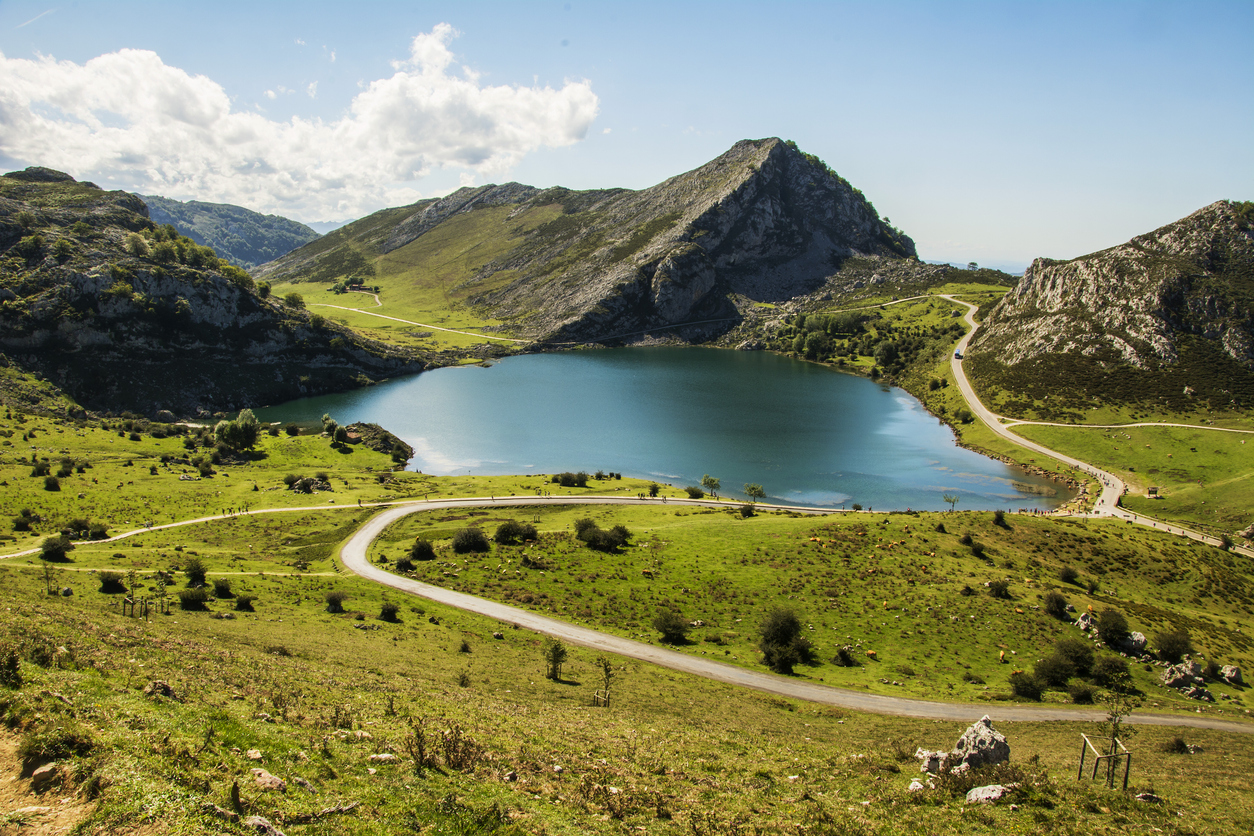
This area is where you’ll find the Covadonga lakes, a magnificently beautiful and pure region. Remember that you can access this area in your own car and, once inside the park, you’ll have access to numerous paths and tracks and can kayak down the mythical Sella river, one of the main tourist attractions in the area.
Cantabria and its mountains
As we move towards the east, we’ll reach Cantabria, a region composed almost exclusively of mountainous formations.
Our first recommended stop is the El Soplao cave. At more than 20km long, it’s considered the only one of its kind in the world due to the quantity and quality of the geological formations you can see there.
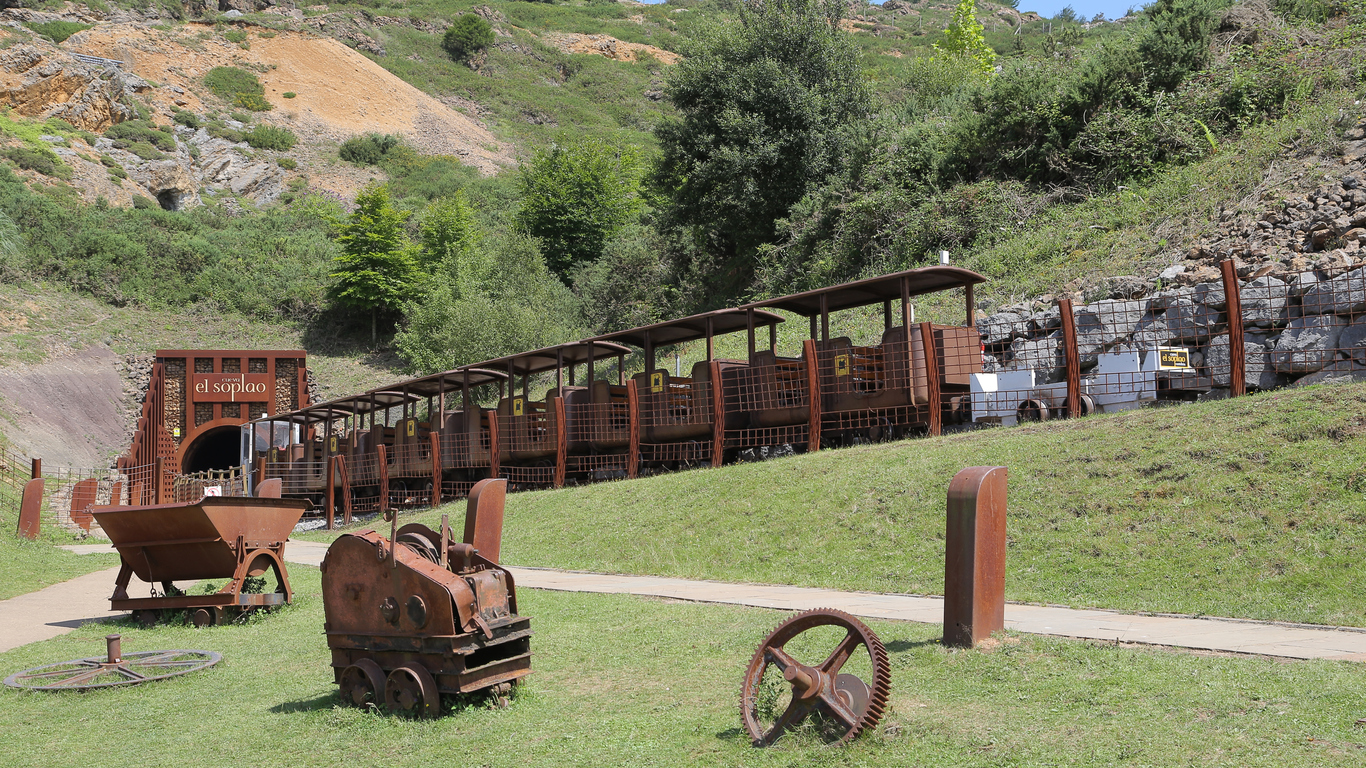
After rising from the depths of the cave, you can contemplate a more outward-looking vista from the Santa Catalina observation point. Located above the Hermida gorge, the location offers a gorgeous view and is a great spot for photos.
After you’ve had your fill of beautiful views, we recommend taking the ruta de los pueblos to visit Potes and Fuente Dé. In the latter, make sure to take a trip on the cable car that brings you to the summit of the gorge.
Finally, head in the direction of Liencres Dunes Nature Reserve to approach the Costa Quebrada, just 15km from the capital Santander. In less than a 15-minute drive, you’ll be able to visit Cabárceno National Park, a must-see stop on any trip through Northern Spain worth doing.
The last stop: The Basque Country
Last but definitely not least, we recommend making a few stops in some of the Basque Country’s natural parks. After a quick trip to Bilbao, you can head in the direction of the Bakio coast to visit Urdaibai, an estuary that’s a biosphere reserve and home to a large number of migratory birds that rest here on their journeys.
After this, close to Guernica, you’ll reach the Urkiola Natural Park, with more than 5000 hectares of gorgeous mountainous landscape.
Moving on, but very close, you’ll find the 20,000-hectare Gorbea Natural Park, the largest in terms of protected land. It’s one of the few forests where you might still catch a glimpse of an Iberian wolf.
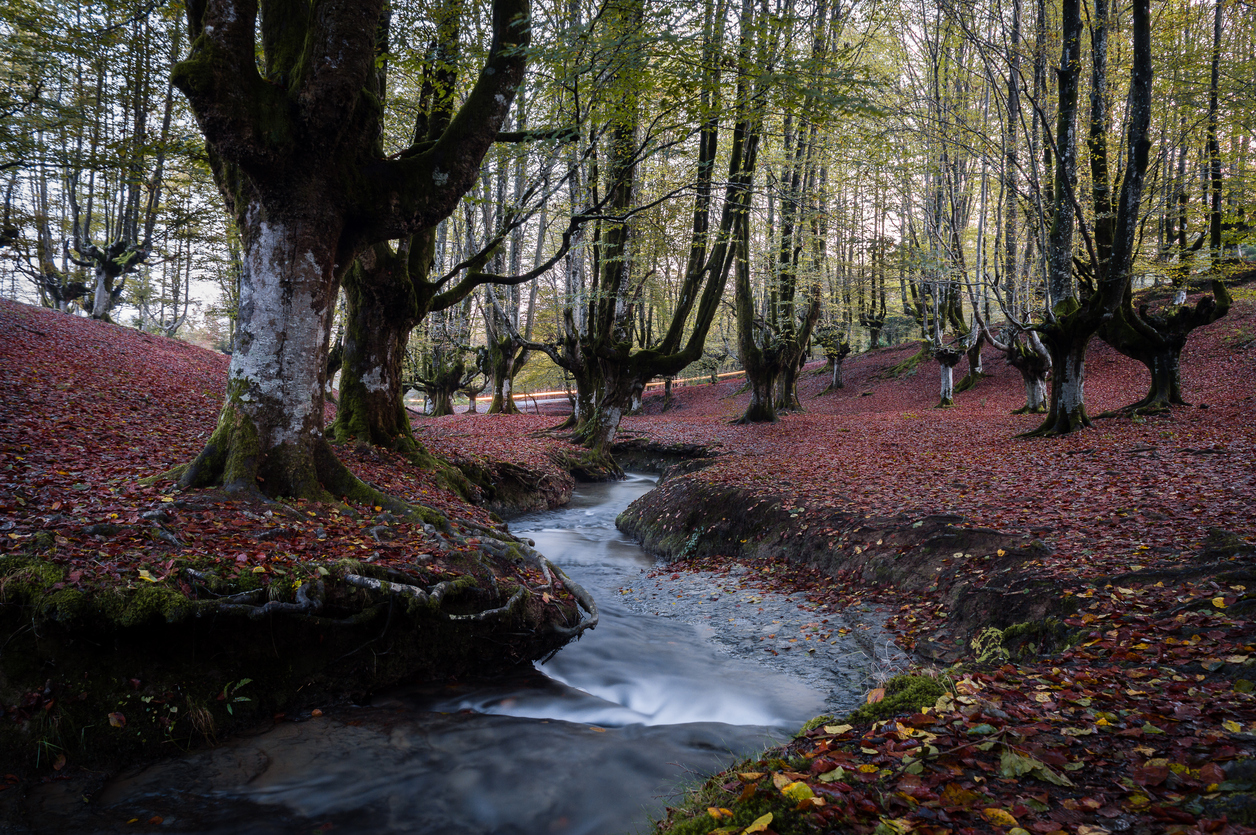
After arriving in Vitoria-Gasteiz, the route continues on to the, an authentic natural corridor between the Pyrenees and the Cantabrian Aizkorri-Aratz Natural Park mountains. This is the highest point in all of the Basque Country, at almost 1500 metres above sea level.
Once you’ve passed through Eibar, in the direction of Deva, the next stop is the Ekain Cave, a UNESCO World Heritage site due to the Palaeolithic rock art found there.
As our last stop on our car journey through the north of Spain, we should spend some time to enjoy the delightful San Sebastian. Our little trip ends in this cultural and gastronomic capital, looking out over Concha Beach. Widely considered one of Spain’s best tourist attractions, it was chosen as the 6th best beach in the world in 2017 in the prestigious TripAdvisor Traveler´s Choice awards.



